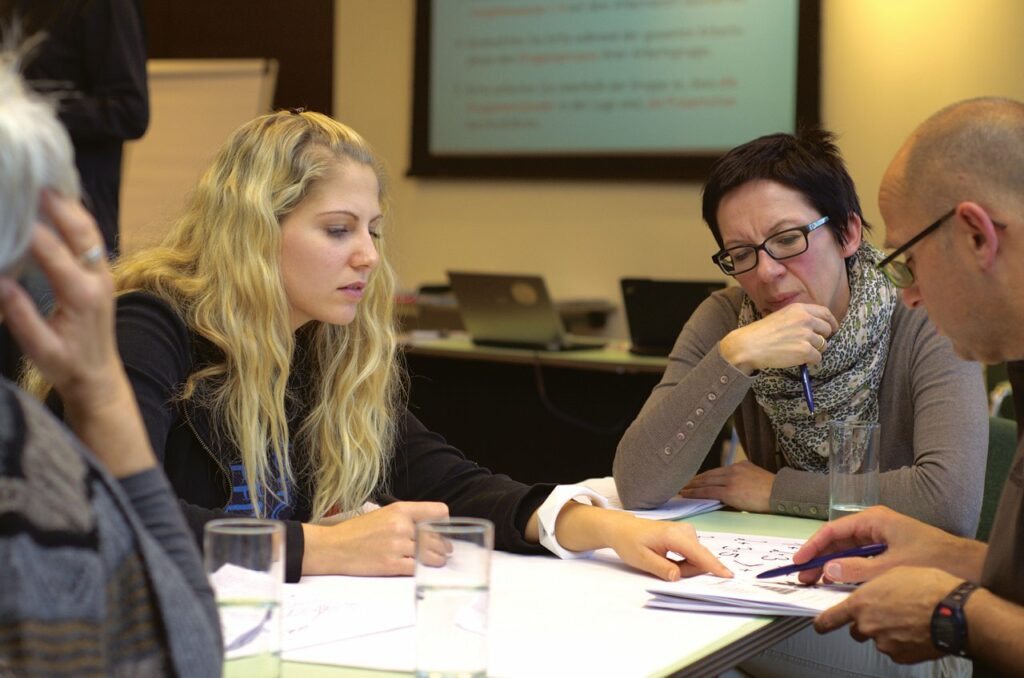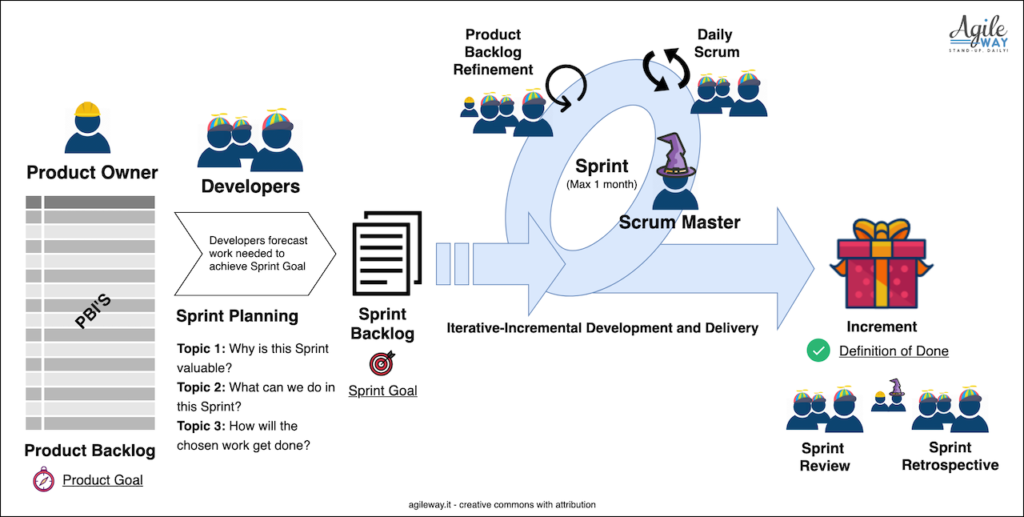The topic of project management can be a little touchy for some business owners. Any collaboration between a team of specialists, freelancers and a client can quickly become a sticky situation if not every party is on the same page.
The Idea of Scrum
Clients can receive a final version that doesn’t meet their expectations. Project workers can envision a very different outcome than the client, based on miscommunication or misunderstandings.

Everyone is nervous at the final reveal, hoping that they got it right the first time.
Scrum, an Agile framework, was designed to alleviate that stress. Though it has its origins in software development, the concept can be used in many business settings.
In this overview of the Scrum framework, we’ll take a look at the guiding principles, the overall process, and how scrum can benefit product development for nearly any business hoping to meet client needs quickly and correctly.
What Is Scrum?
“Scrum” may be somewhat of a strange-sounding term, but the actual idea behind it is straightforward.
In a traditional project management setting, each member of a team is given a portion of a project to complete, based on their skills and expertise.
Then, before the final result is revealed to the client, they put everything together in hopes that it all works and meets the client’s expectations.
Scrum was developed along with the principles of Agile. Rather than relying on the work of many individuals over a long period of time, Scrum requires incremental development.

While specialists may have their own responsibilities within a project, the Scrum framework dictates that every person on the team meets at regular intervals to meet small goals.
The team may also wish to meet with the client frequently to demonstrate progress and check in to ensure their results are exactly what the client wants.
The Core Concept of Scrum
The concept behind the Scrum methodology is to break a very large project into bite-sized steps that can be accomplished quickly.
The responsible teams are encouraged to break out tasks amongst themselves, rather than having assigned pieces and parts. The idea behind this is that when individuals take ownership of a particular task, they are more connected to the outcomes.
By team members organizing themselves, they are able to work on the tasks about which they are truly passionate. Communication is an absolute must as the team works to creatively reach their next deadline successfully.
The Parts and Pieces of Scrum

The events within the Scrum are known as “ceremonies”. Each ceremony is strategically designed to enhance communication and transparency amongst the team.
The time during which work on the project is done is known as the “Sprint”. Typically, a Sprint lasts between two to four weeks, though a shorter Sprint is not uncommon, especially as project completion appears on the horizon.
Sprint Planning
“Sprint planning” meetings are held to examine the deliverables for each sprint, with time set aside to discuss strategy and how the team will work towards the next project goal throughout the next sprint.
Once the Sprint period has ended, a “sprint review” is held. During this meeting, the team discusses what has been accomplished. All client criteria are checked before the results of the Sprint are shared with the client, who is encouraged to provide feedback about the results to date.
Daily Stand up
The “Daily Stand Up” is a short meeting that occurs every day, as the name implies. This is an opportunity for each member of the team to discuss their progress, including any obstacles, challenges, or questions that might have come up since the previous day.
The Retrospective Team Meeting
The final team meeting is known as “the Retrospective.” This is an opportunity for the team members to reflect on successes and opportunities for the next sprint, with a focus on improvement and enhancing the functionality of the team as a whole.
The Teams

Within the Scrum framework are three important roles, also known as “accountabilities”.
The Scrum Master is the individual who facilitates the ceremonies, encourages and coaches the team, and works to eliminate challenges along the way to ensure each sprint produces the intended goal.
The Product Owner is the accountability representative for the client. They are responsible for communicating goals, expectations, and changes, was well as creating their own checklist for each sprint along the way. The Product Owner is tasked with explaining and prioritizing each deliverable to ensure the team is aligned with product vision and goal.
The Developers is the group of individuals who work to meet each goal. They are encouraged to organize and communicate amongst themselves to ensure each sprint is successful, relying upon each other to solve problems, overcome obstacles, and enhance each other’s work.
How Can the Scrum Framework Benefit Project Management?
The main principles of Agile involve improving communication and activities within a team to enhance their overall productivity.
Keeping customer satisfaction as the main goal, concepts such as welcoming change and collaboration, holding personal discussions and conversations, and holding to the tenets of simplicity and functionality.

Teams that embrace Agile and Scrum concepts have found that there are many benefits to the process. Rather than doing a lot of work and hoping for the client’s approval, breaking a project into smaller sprints allows for flexibility throughout the process.
As clients and team members watch the project build and grow, they are able to notice things that aren’t quite right, or potential problems down the road. Instead of having to take apart a finished project, they can adjust mid-stream to create the desired outcome.
As a result, costs are lower and creativity is higher. These smaller adjustments are frequently far less time consuming than a major overhaul, and mean that every moment spent on a project is fully productive.
Workers are faced with smaller challenges and obstacles along the way, and can count on each other to provide innovative solutions. Rather than facing a giant problem at the end of a project, these project “speed bumps” lead to greater accountability and synchrony within a team.
The client feels heard, which leads to greater overall satisfaction, and the employees feel that their work is valued and appreciated.
Wrapping Up and Available Trainings
Project management and Product development will always involve a significant amount of stress, with unforeseen challenges, fast-approaching deadlines, and things just not working the way they should.
The Scrum framework takes those great big projects and simplifies them into steps. Each Sprint leads to a new goal, and clients are given the opportunity to watch their project take life.
The result is better communication, less stress, and a higher level of overall satisfaction.
Do You Need Training on Scrum and Agile Methodologies? You can Schedule a Solid Remote Training for Yourself or Your Company, Held by Certified Scrum Professionals
Here’s what You will Learn:









